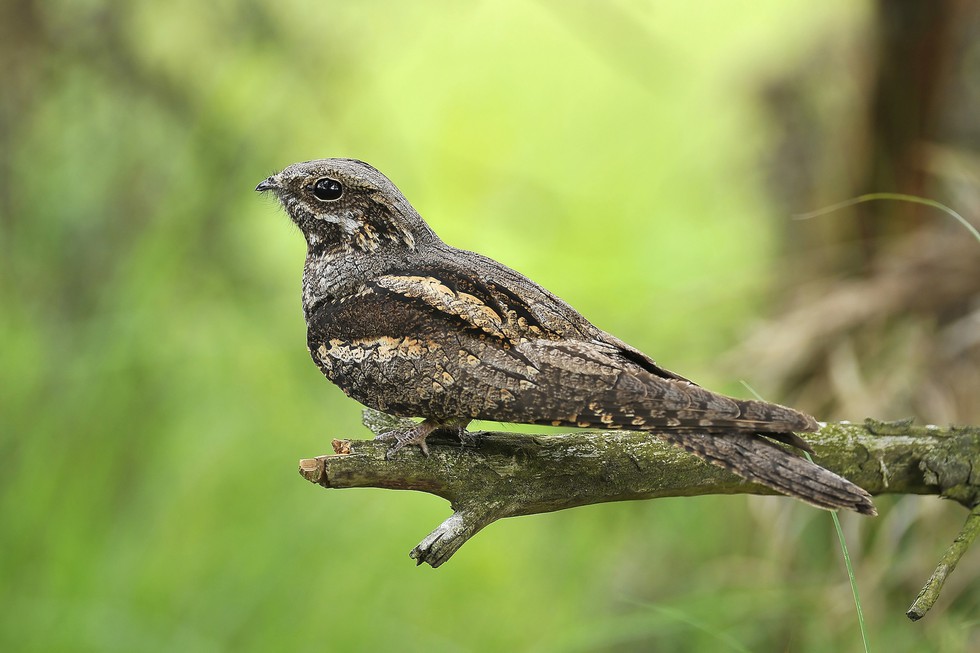A team of scientists from the Swedish Museum of Natural History, along with collaborators, has described a new species of nightjar. This bird resides in the tropical forests of Timor and Wetar in the Lesser Sunda Islands.
Nightjars: An Overview
Nightjars are medium-sized, nocturnal, insectivorous birds belonging to the family Caprimulgidae and the order Caprimulgiformes. They are found globally, except in Antarctica and some isolated islands like the Seychelles.
Physical Characteristics
- Wings: Long
- Legs: Short
- Bills: Very short
- Behavior: They catch flying insects at night and rest on the ground or on branches during the day.
Research Focus
The scientists focused on the Caprimulgus macrurus complex, a group of six morphologically similar but vocally distinct nightjar species distributed from Pakistan to Australia.
Discovery of Caprimulgus ritae
Fieldwork on Timor and Wetar led to the discovery of a new species within this complex. Named Caprimulgus ritae or the Timor nightjar, this bird differs from its relatives by at least 13 vocal characteristics.
Habitat and Distribution
Caprimulgus ritae is a forest specialist recorded in various tropical forests from tall evergreen to highly deciduous dry forests, primarily below 1,000 meters, with one instance recorded at 1,500 meters. This species is unique to the range of the Caprimulgus macrurus complex.
Endemism and Other Species
Caprimulgus ritae is the fourth bird species known to be endemic to both Timor and Wetar. Other endemic species include:
- Timor imperial pigeon (Ducula cineracea)
- Wetar ground dove (Pampusana gallicolumba hoedtii)
- Iris lorikeet (Saudareos iris)
Additionally, six other species on Timor and Wetar are only found on nearby islands like Atauro, Roti, and Semau. The distribution of Caprimulgus ritae parallels that of several other bird species. Wetar is 51 km from Timor and 76 km from Alor, with Atauro Island situated between them. The lack of divergence in the cyt b sequences from Timor and Wetar suggests recent colonization between these locations.
Multiple Choice Questions (MCQs):
- What is the new species of nightjar discovered by scientists?
- A. Caprimulgus macrurus
- B. Caprimulgus celebensis
- C. Caprimulgus manillensis
- D. Caprimulgus ritae
- Answer: D. Caprimulgus ritae
- Which of the following is NOT a characteristic of nightjars?
- A. Long wings
- B. Short legs
- C. Very short bills
- D. Long bills
- Answer: D. Long bills
- Where are nightjars found?
- A. Globally, except Antarctica and some isolated islands
- B. Only in tropical regions
- C. Exclusively in the Northern Hemisphere
- D. Only in rainforests
- Answer: A. Globally, except Antarctica and some isolated islands
- Which other bird species is NOT endemic to both Timor and Wetar?
- A. Timor imperial pigeon
- B. Wetar ground dove
- C. Iris lorikeet
- D. Caprimulgus macrurus
- Answer: D. Caprimulgus macrurus
- What does the lack of divergence in the cyt b sequences between Timor and Wetar suggest?
- A. There is significant evolutionary divergence.
- B. Colonization between these locations was probably recent.
- C. The species on both islands have been separate for a long time.
- D. The species on Wetar evolved independently.
- Answer: B. Colonization between these locations was probably recent.
